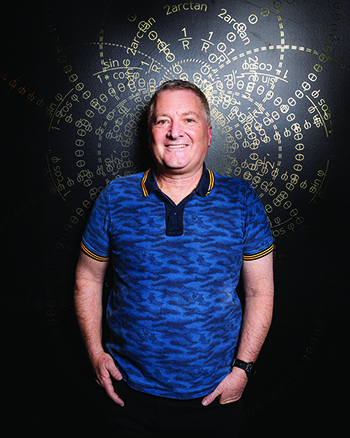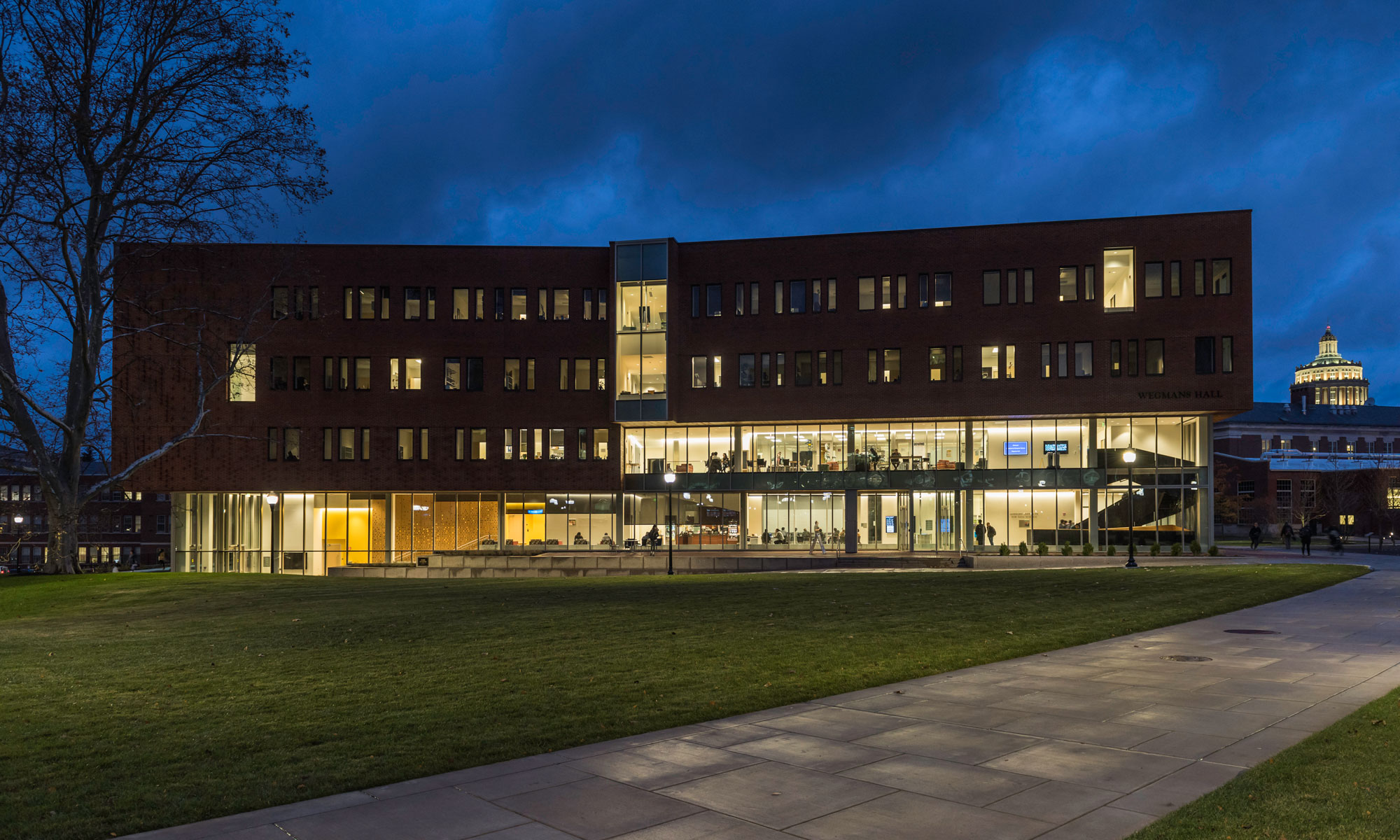Stu Elby ’82 helps make Sphere a revolutionary entertainment venue.
Standing out amongst the glitz and glamor of the Las Vegas Strip is difficult and drawing someone’s gaze more than half a mile away seems downright impossible. Yet people can’t help but stop and look at Sphere, the 366-foot-tall live entertainment venue that is a spectacle inside and out.
What started in 2016 as a sketch on a napkin by James Dolan, the executive chair and CEO of Sphere Entertainment Co., and also owner of Madison Square Garden and the New York Knicks and Rangers, required massive amounts of technological innovation to make a reality. Helping lead the way on those advancements was Stu Elby ’82, the senior vice president of advanced engineering at MSG Ventures, a division of Sphere Entertainment focused on developing advanced technologies for live entertainment.

“The biggest problems in creating Sphere were the laws of physics, because most of the things we wanted to do seem to violate them,” says Elby, a graduate in optics. “We wanted the ability to transport an audience to someplace outside Las Vegas, which means their brains have to really believe they’re not sitting in a theater. We had to invent a whole new type of platform to do realistic atmospheric effects to achieve that.”
Housed inside the world’s largest spherical structure, the performance venue features countless technical marvels. Its creative canvas spans 160,000 square feet of LED panels positioned precisely on the dome to produce a seamless image. The Sphere team even developed a one-of-a-kind camera system to record visuals for the curved display.
Behind the LED panels are approximately 1,600 speaker panels delivering 167,000 audio channels using advanced math to create 360-degree audio environments. Elby and his team worked to ensure every seat in Sphere has optimal audio, conquering the problem of sound scattering that occurs at most venues in which the sound is clear in some sections and poor in others. Before the venue opened, they piloted the system—called Sphere Immersive Sound—at the historic Beacon Theatre in New York, part of MSG Ventures.
Sphere’s engineering feats go beyond sight and sound. The team developed air flow techniques to produce four-dimensional wind effects that simulate realistic environmental experiences. The 4D platform also provides smells and temperature changes to further create the experience of being in the scene displayed on the screen.

A-list artists lined up to be among the first to perform at Sphere. Iconic rock band U2 played the first concerts at Sphere when it opened in September 2023, acclaimed filmmaker Darren Aronofsky developed an immersive film for the venue—Postcard from Earth—and jam band royalty Phish and Dead & Company performed multi-night concert runs.
“We have two customers in a sense,” says Elby. “We have the audience members sitting in the seats listening, but also the artists and what they experience on stage through the sound system.”
That requires the Sphere team to be intimately involved with artists in the production of Sphere concerts. He says they begin partnering with musicians months before a performance on everything from stage design to audio effects to visuals.
“It’s a new palette,” says Elby. “No musical artists or directors have ever done anything like this before. There’s a lot of education and collaborative work with them that goes into a Sphere show.”

Sphere’s exterior is as unique and innovative as the venue inside. Comprised of hundreds of interlocking triangles, the building’s exoskeleton—the Exosphere—is the world’s largest LED screen and puts on a 24/7 metamorphosizing public art display. The Sphere team also had to develop creative ways to make it withstand the test of time.
“There are millions of LED pucks on the exterior and we designed it to all be toolless, where workers can snap puck-shaped devices filled with LEDs in and out as needed,” says Elby.
Elby credits his education in optical engineering for preparing him for the myriad challenges the design and construction of Sphere presented, both within his area of expertise and beyond.
“In a sense, optics is applied physics, and that’s what has helped me the most in thinking through these problems,” says Elby.
Elby says it was extremely difficult bringing the venue to life and that he put in five years of working long days collaborating with partners across time zones to make it a reality. But seeing the early concert attendee reactions has been extremely gratifying and he’s just as energized by the work that lies ahead.
This story appears in the summer 2024 issue of Rochester Review, the magazine of the University of Rochester.





